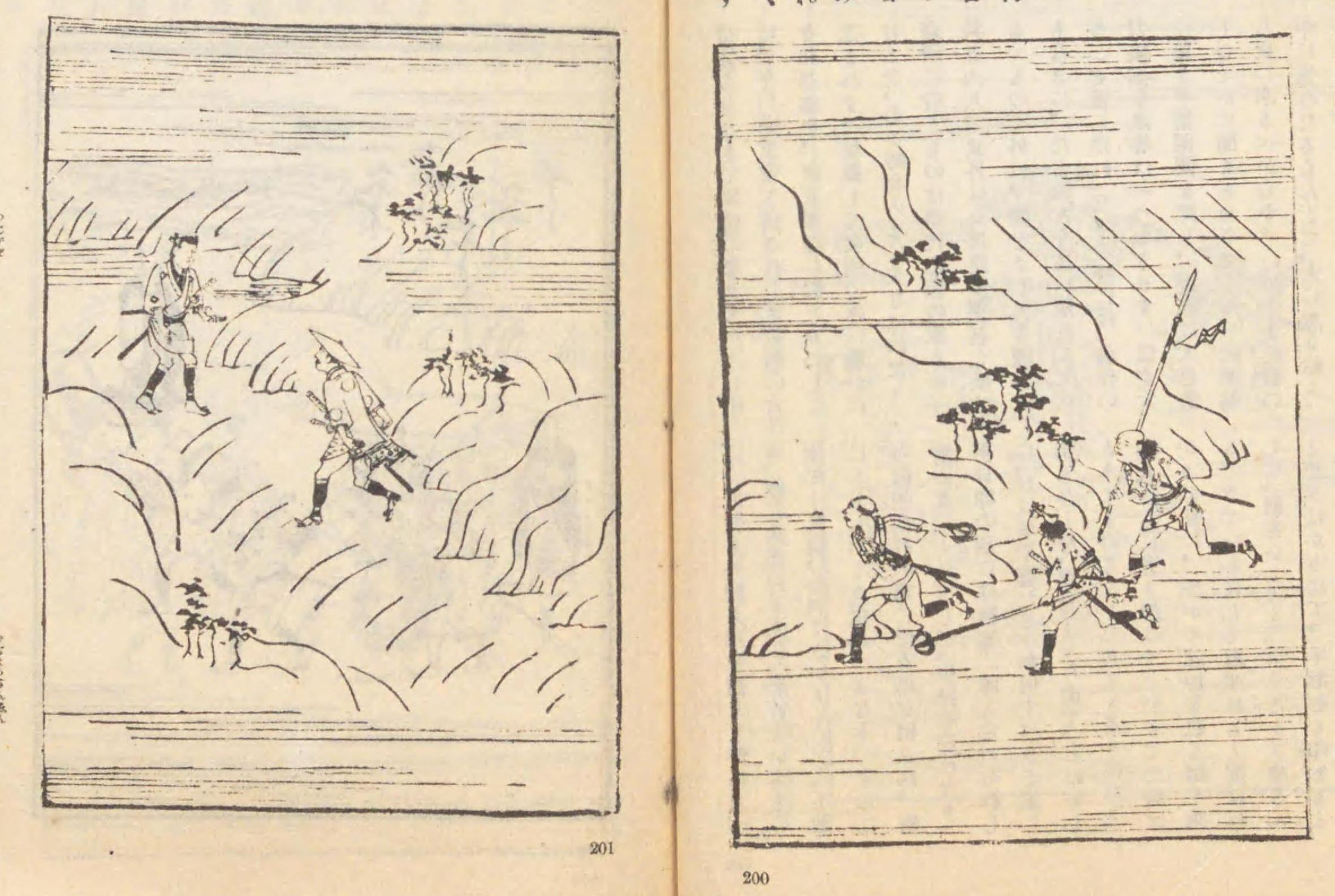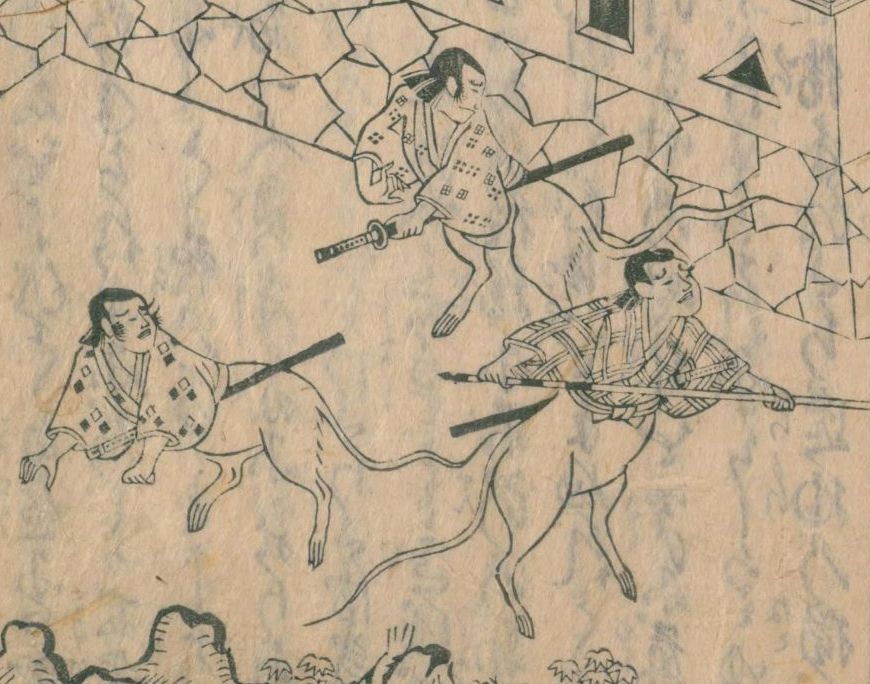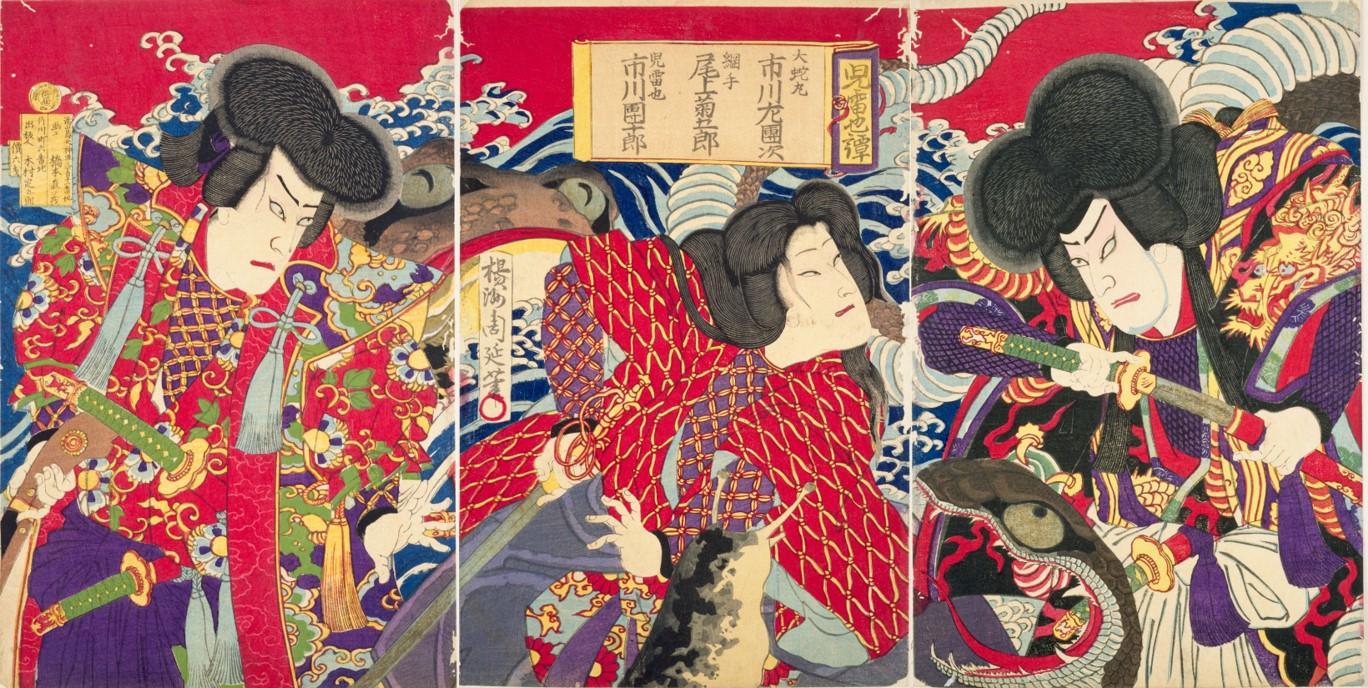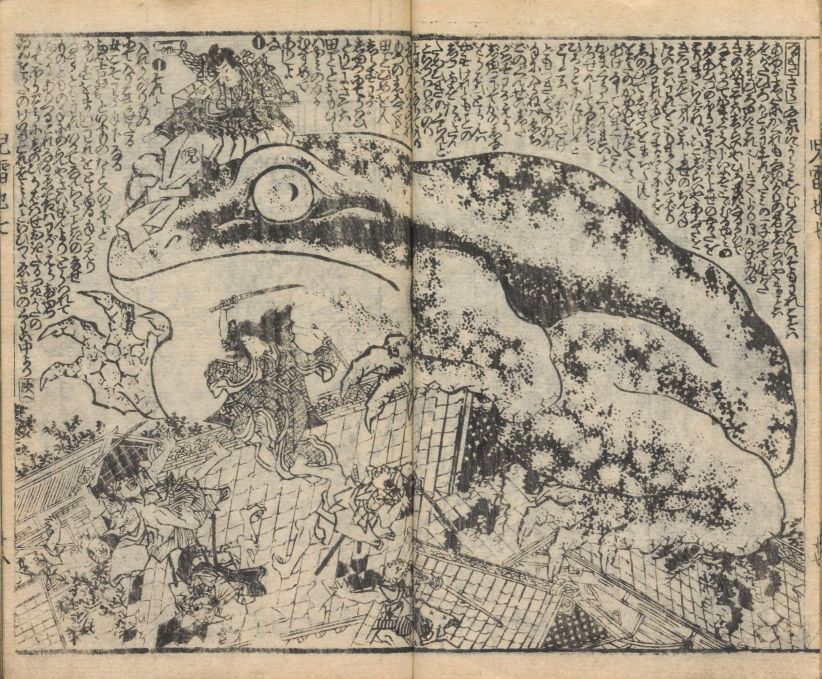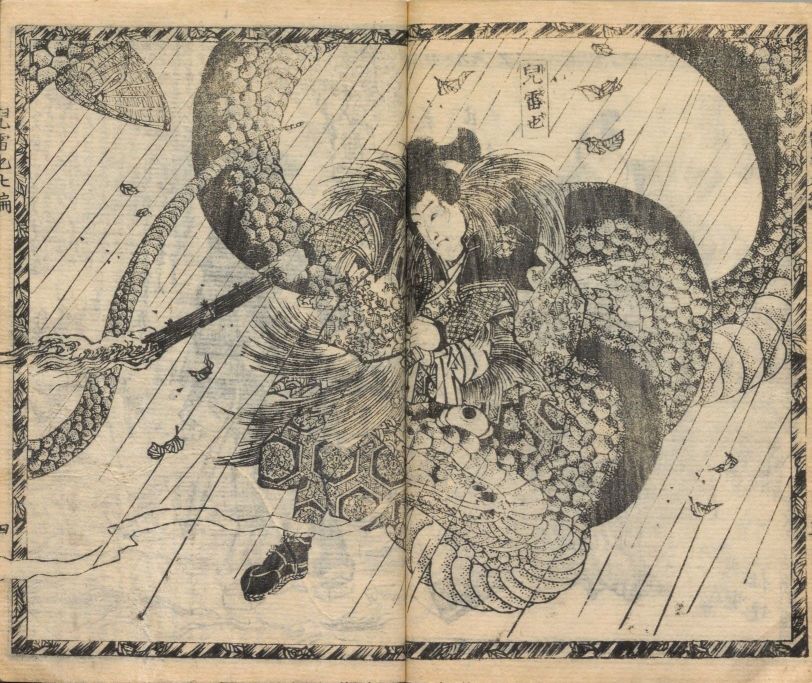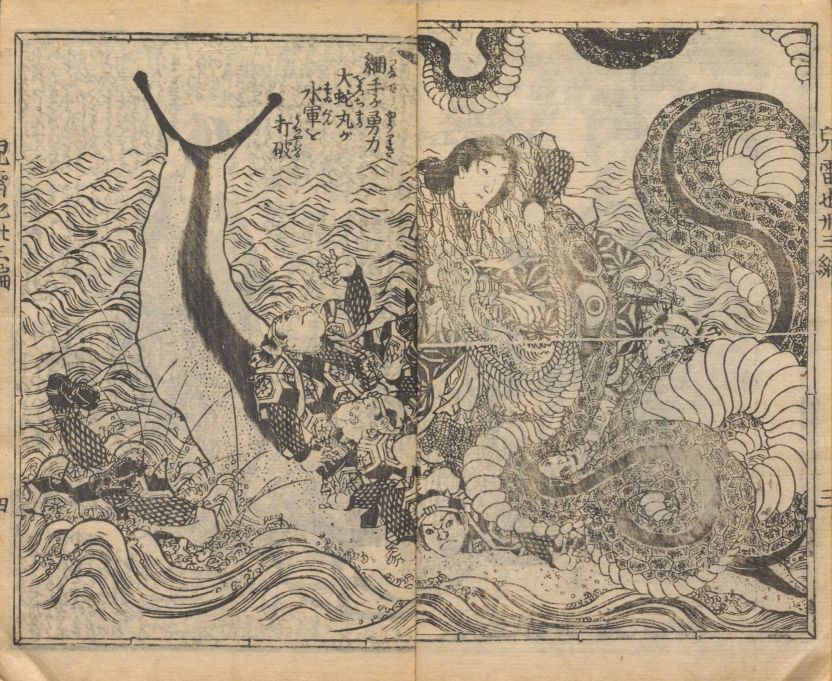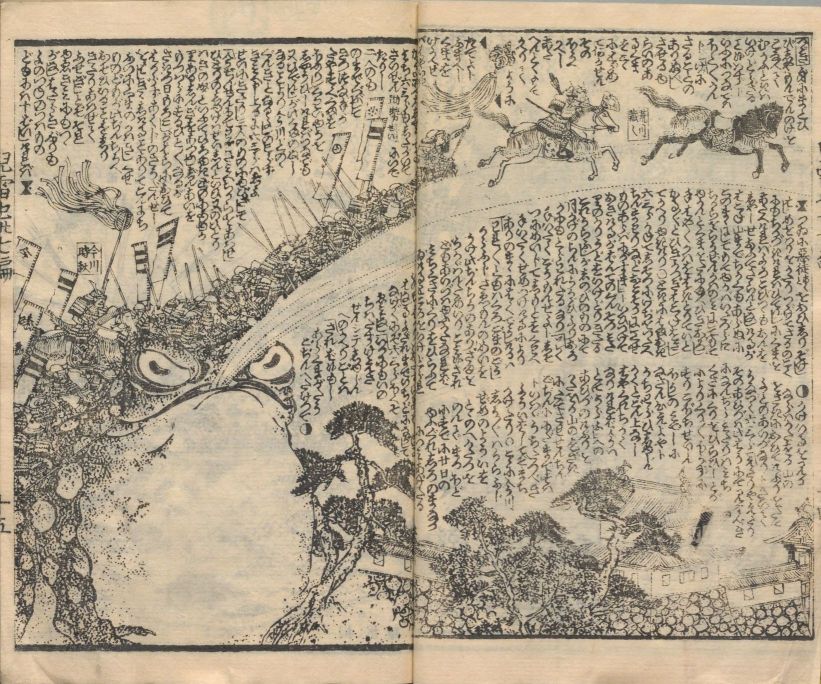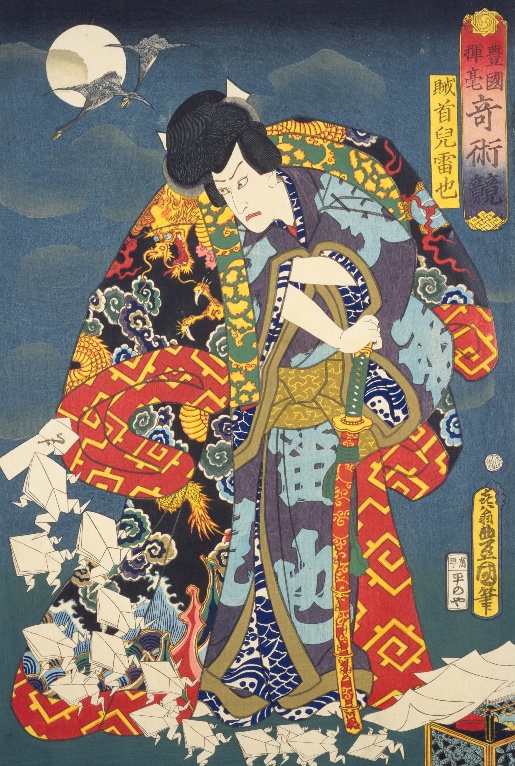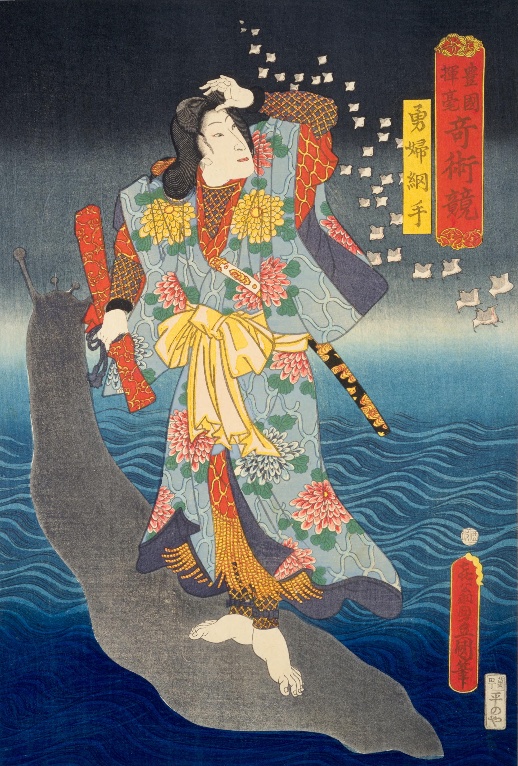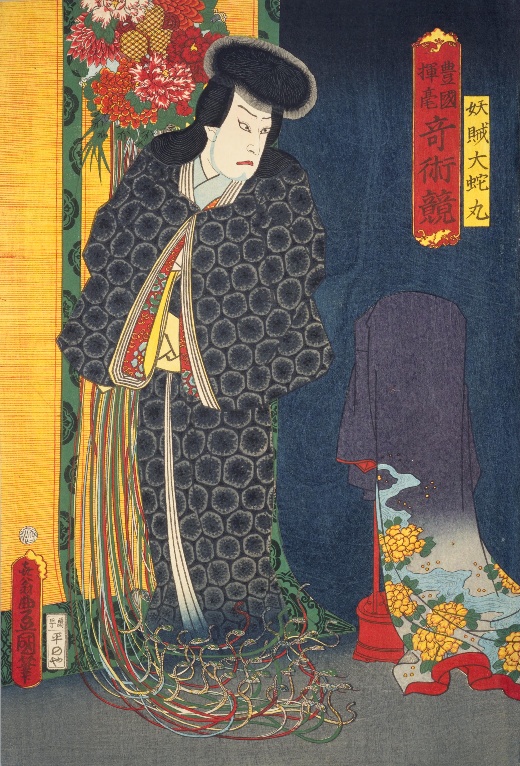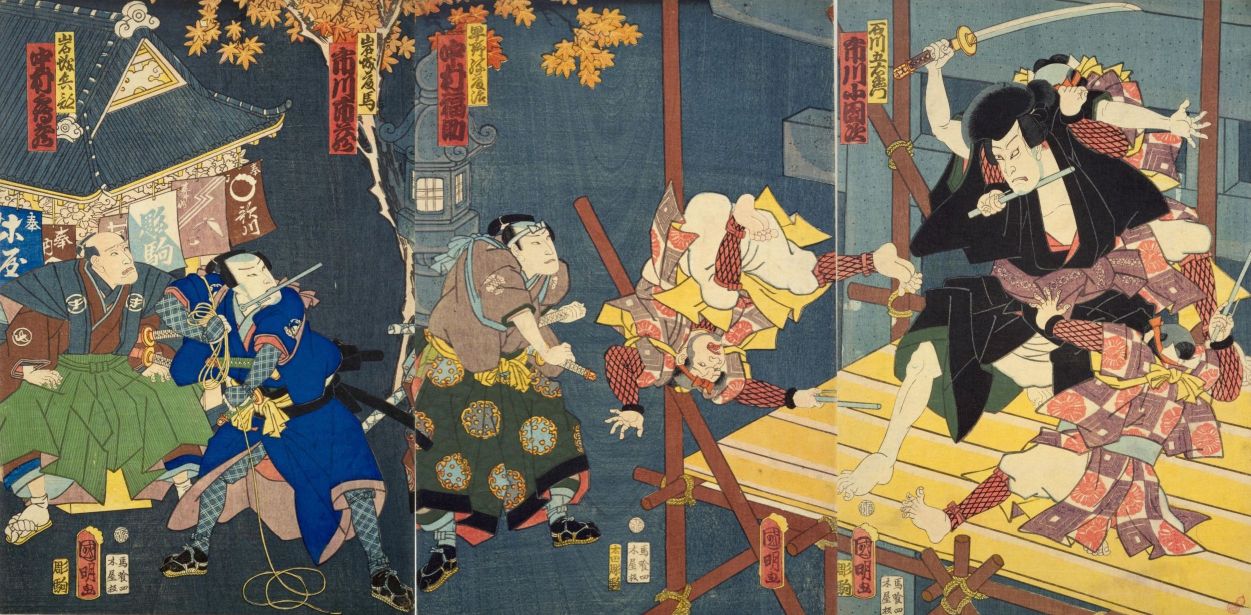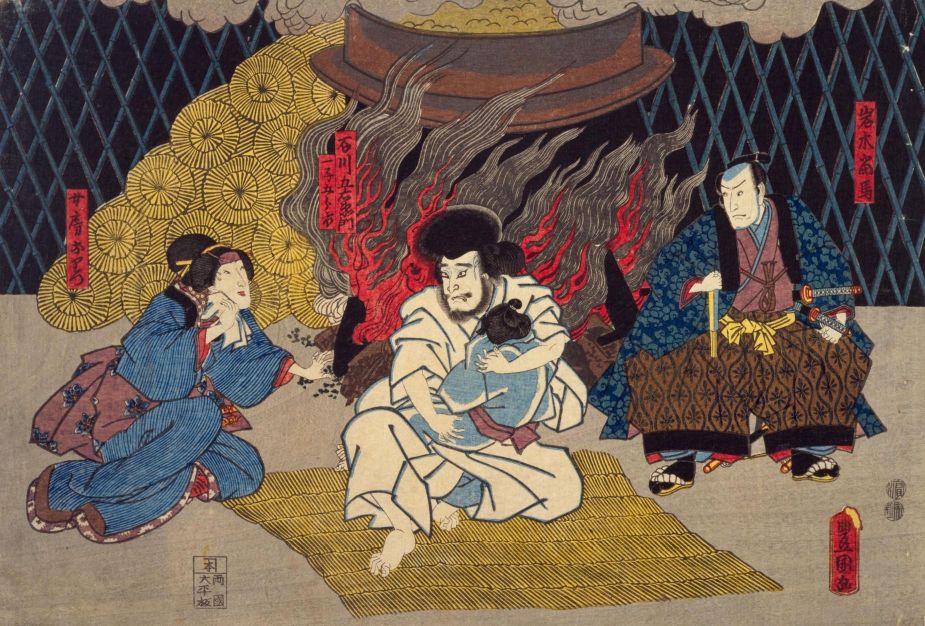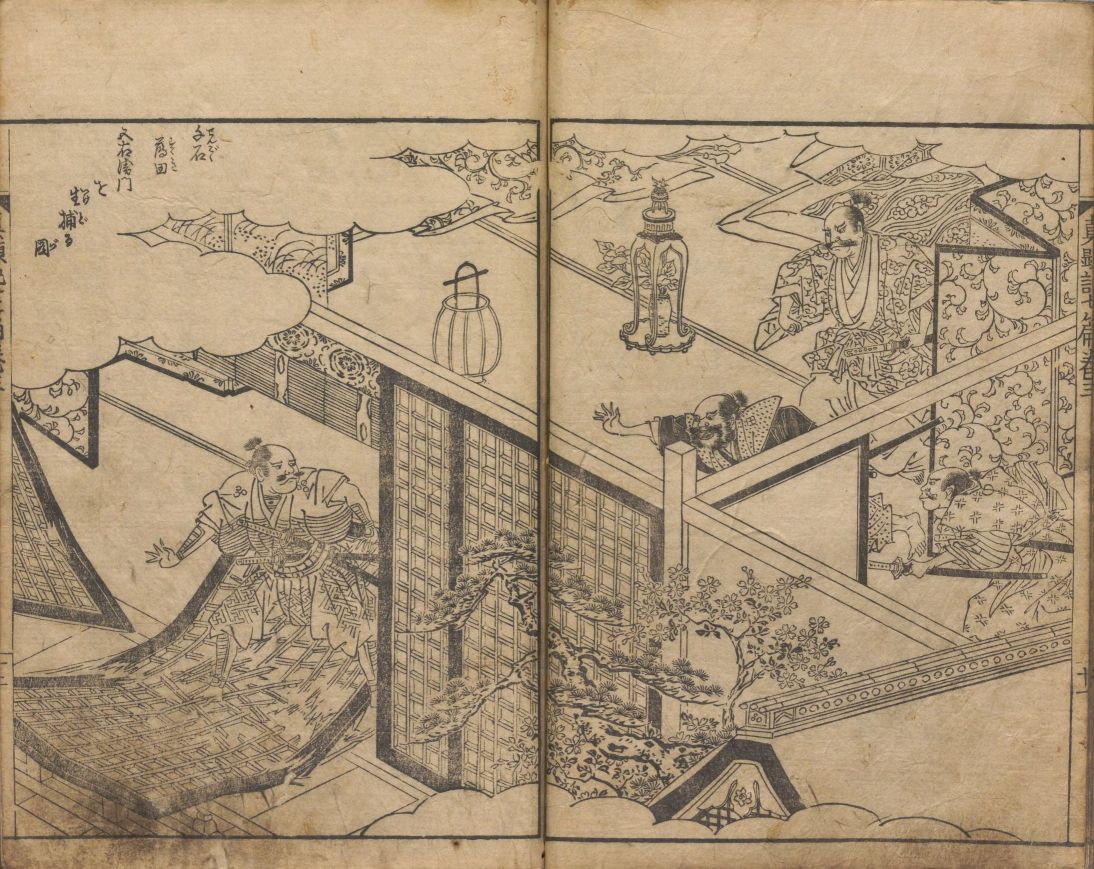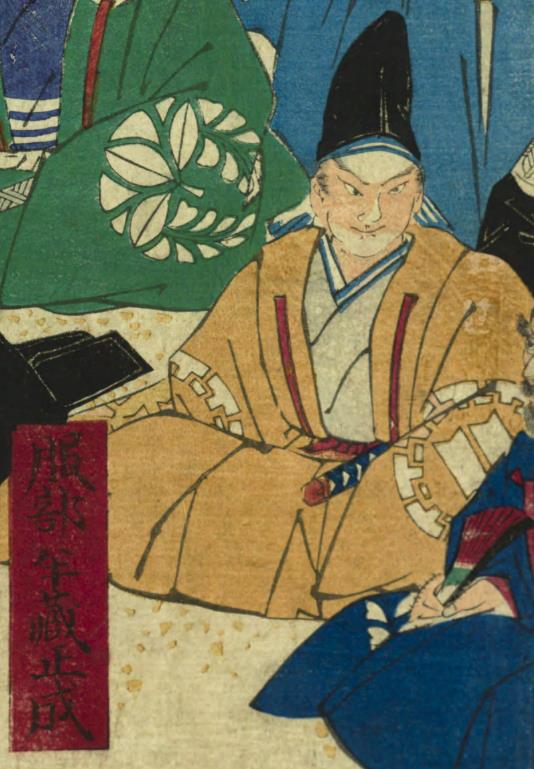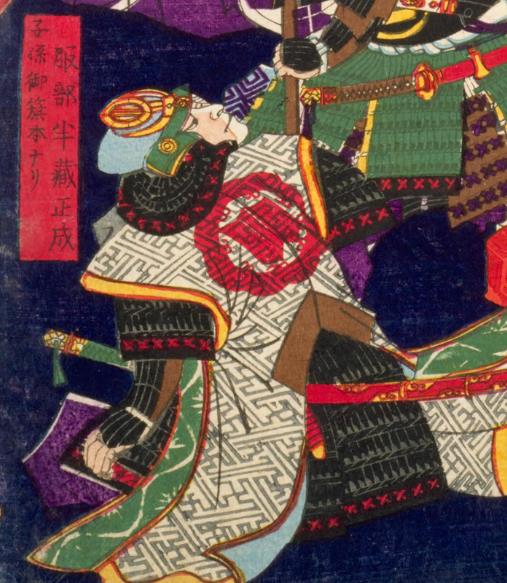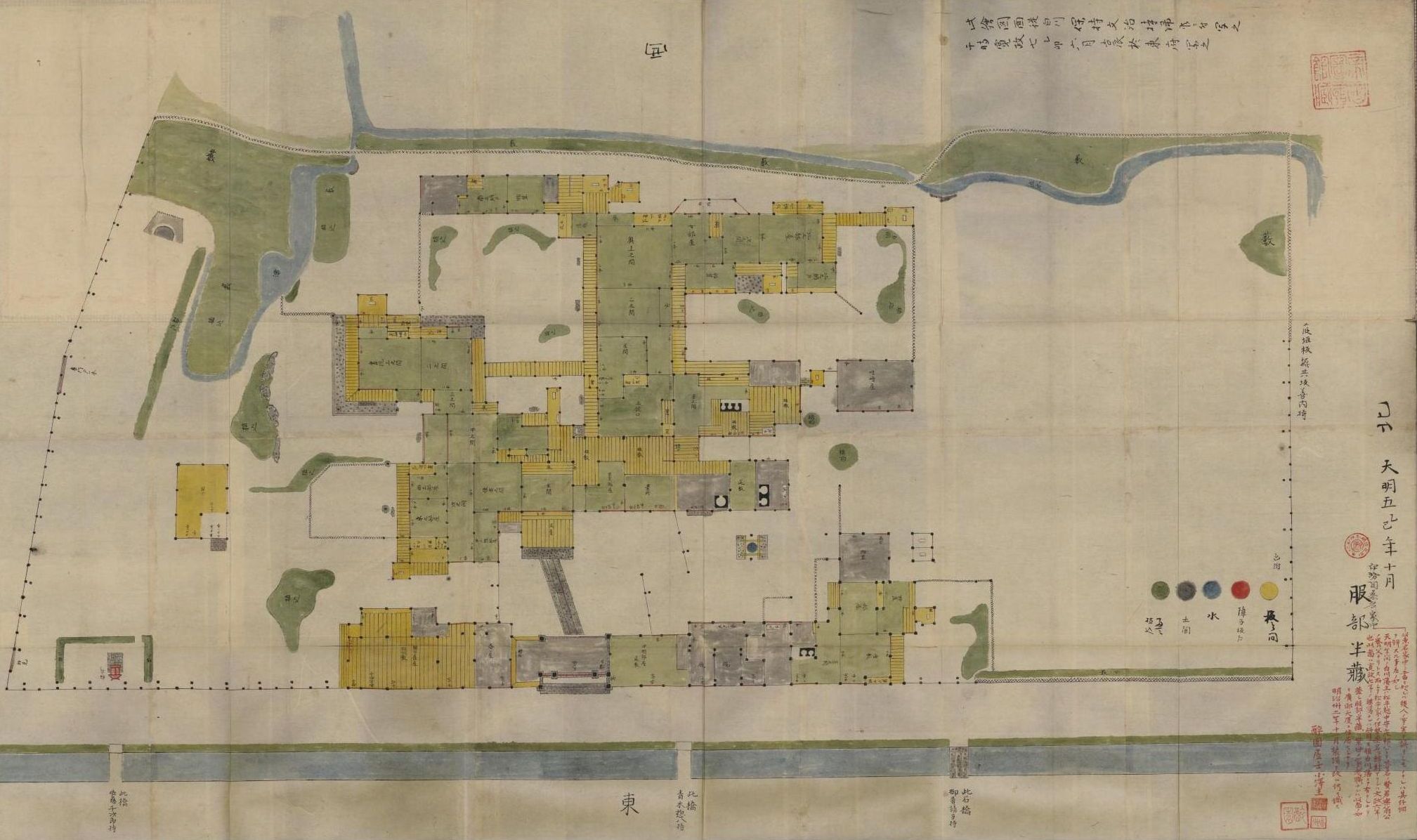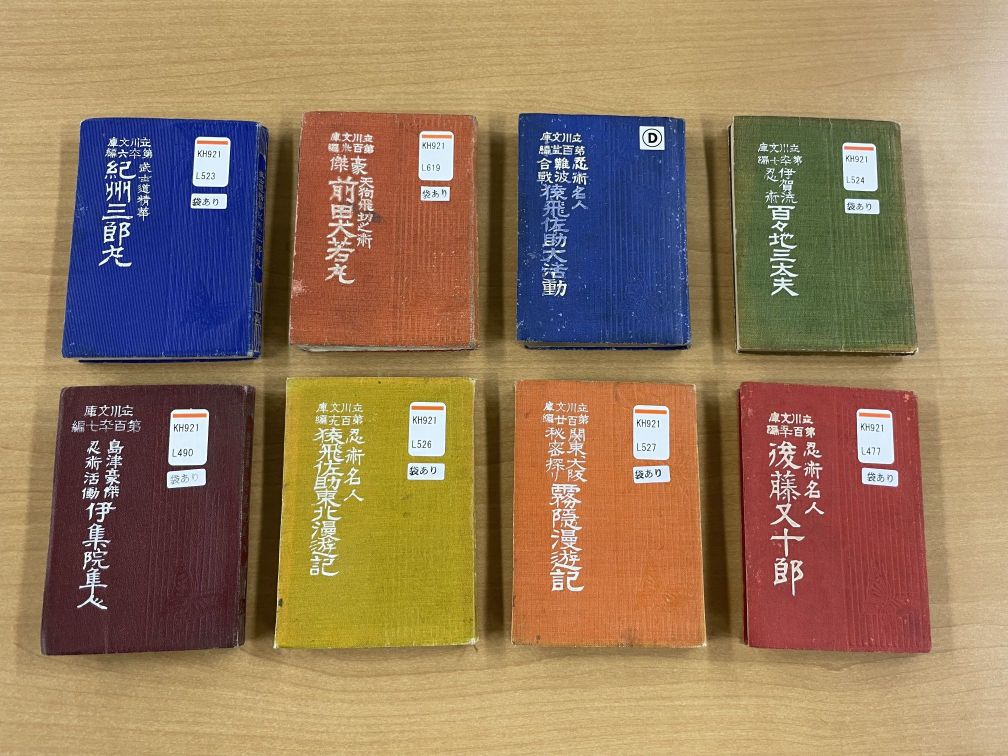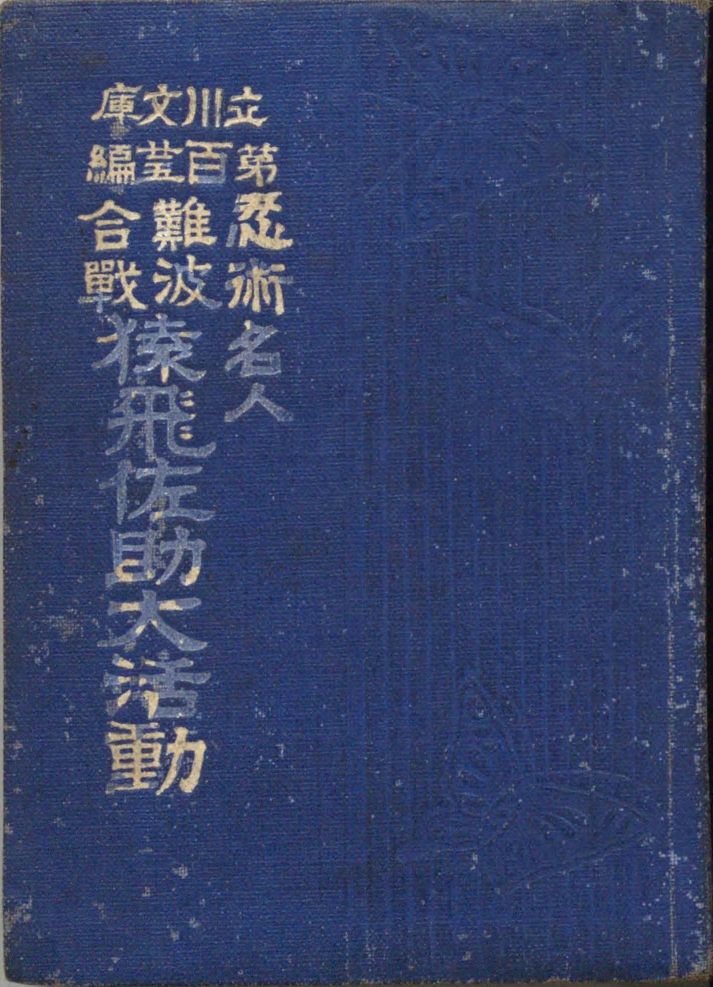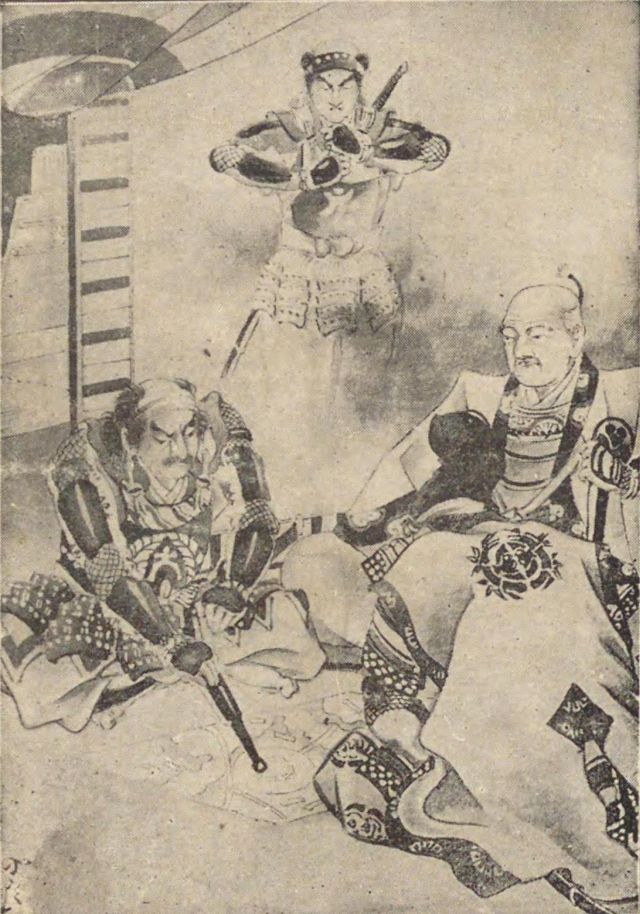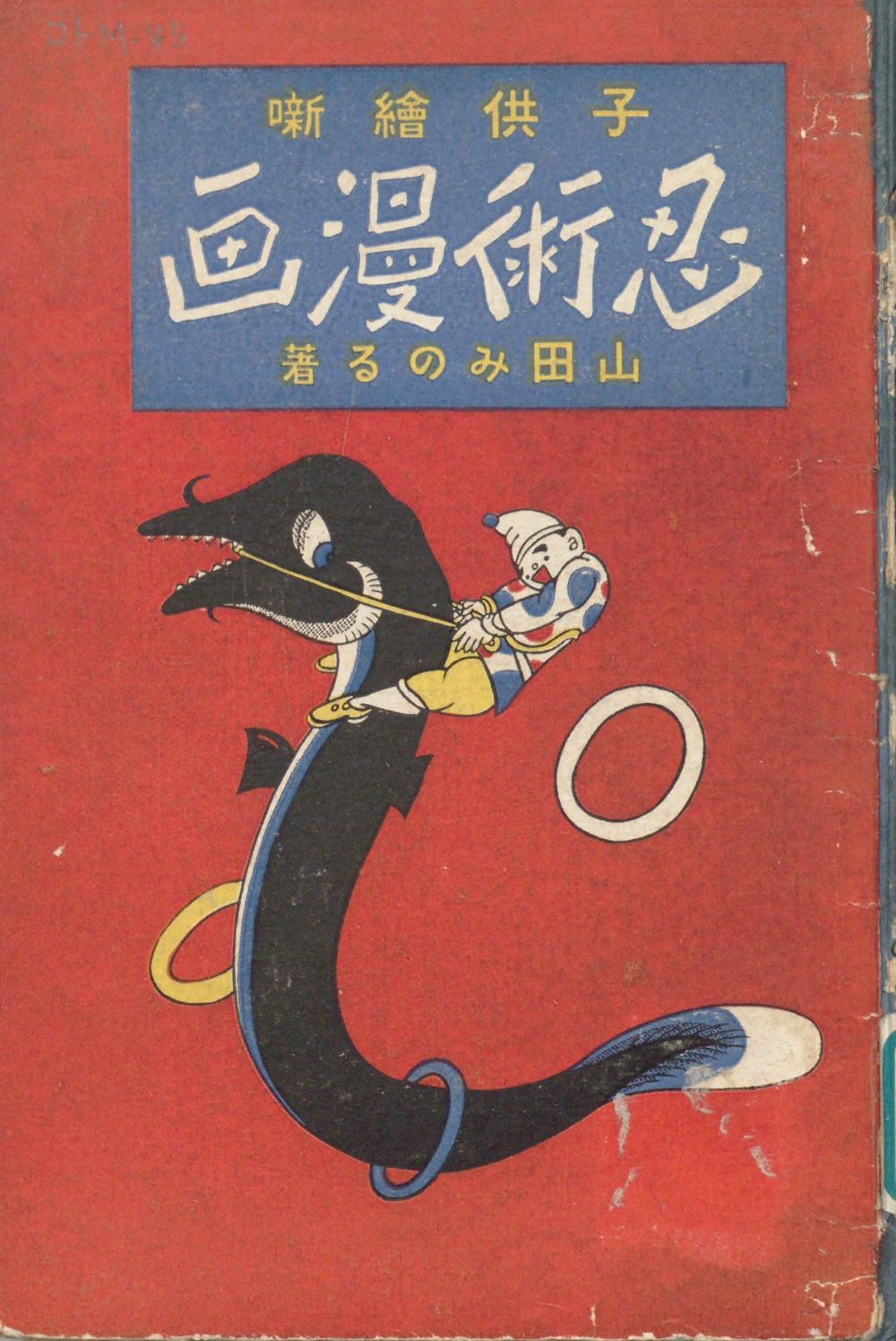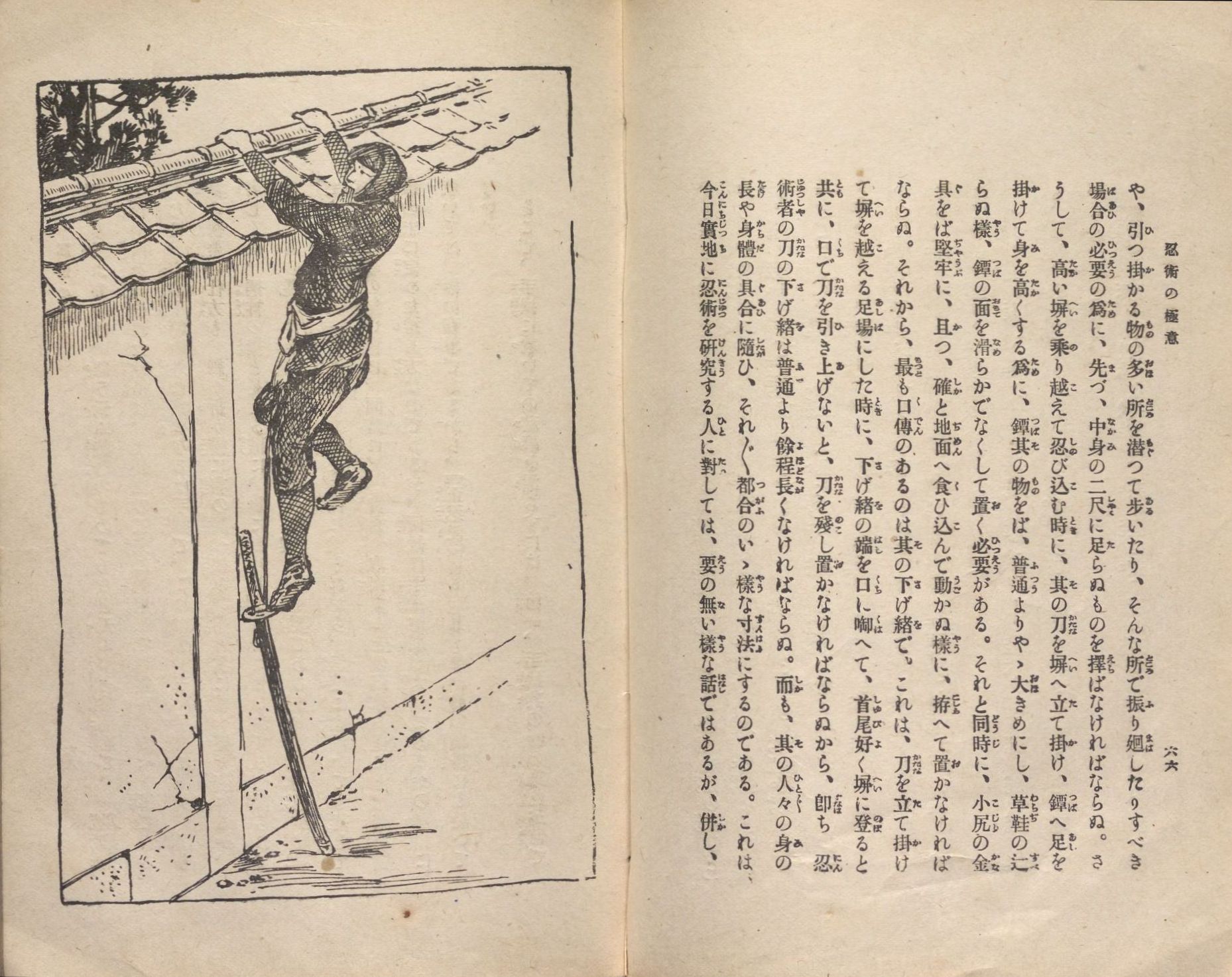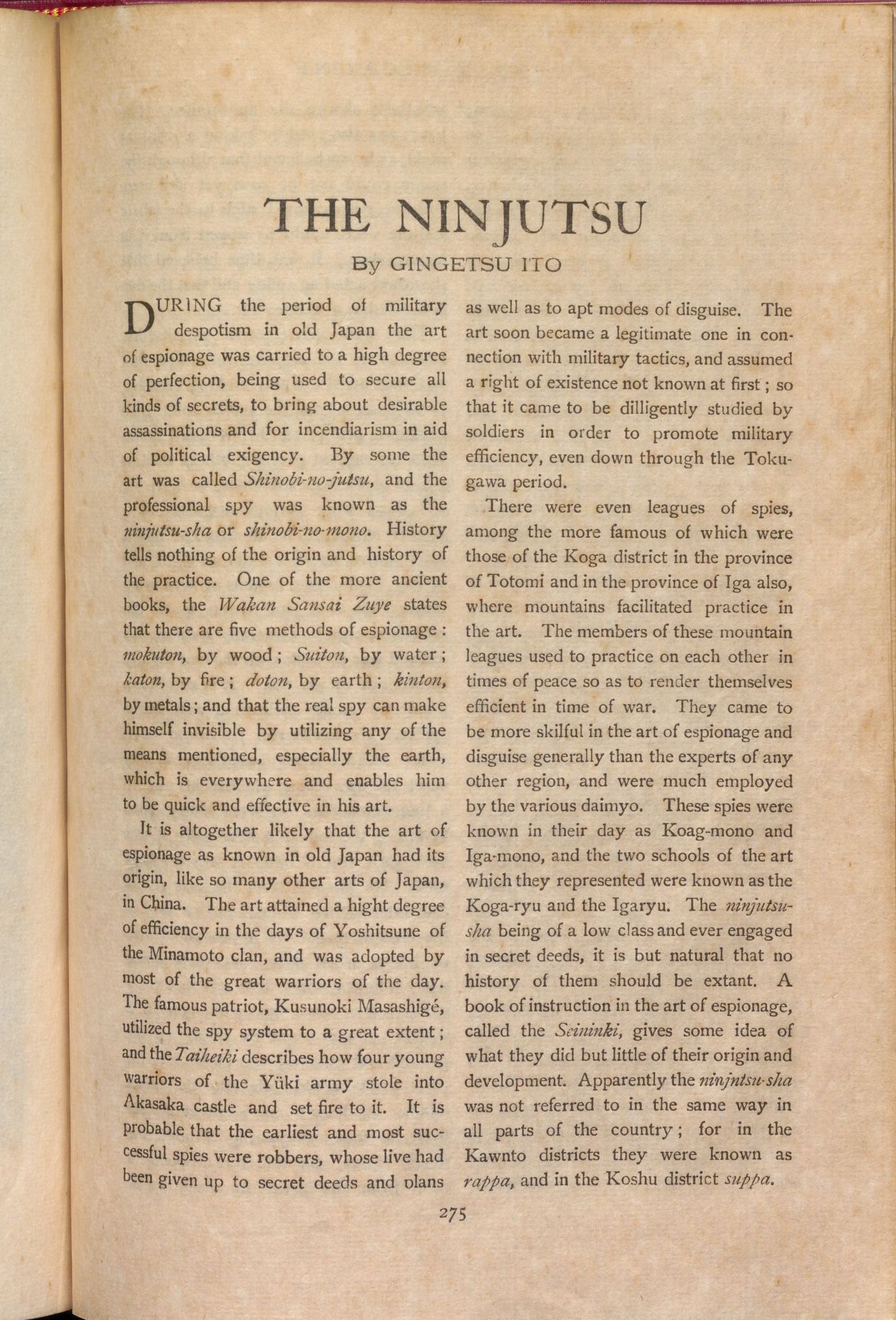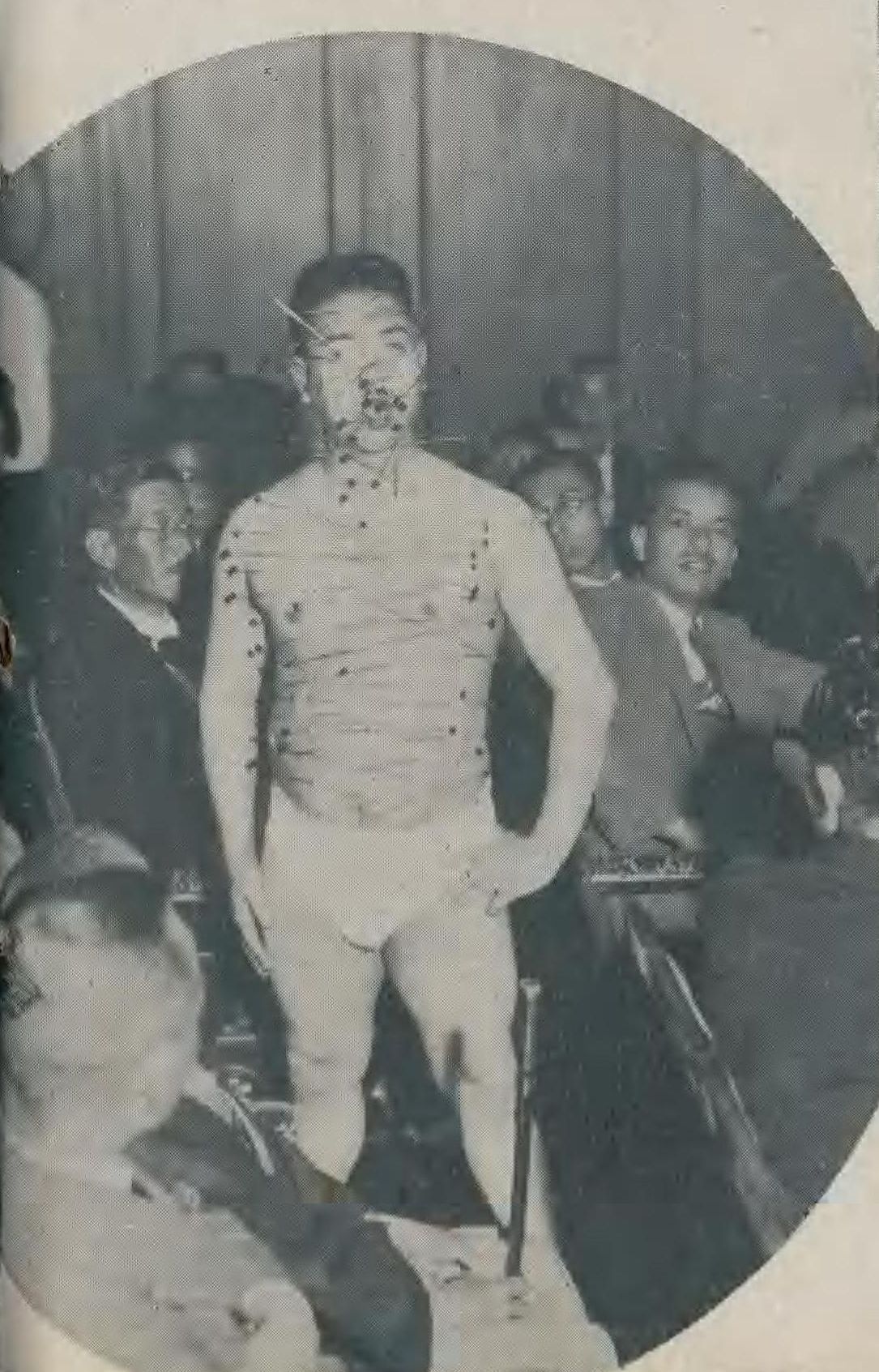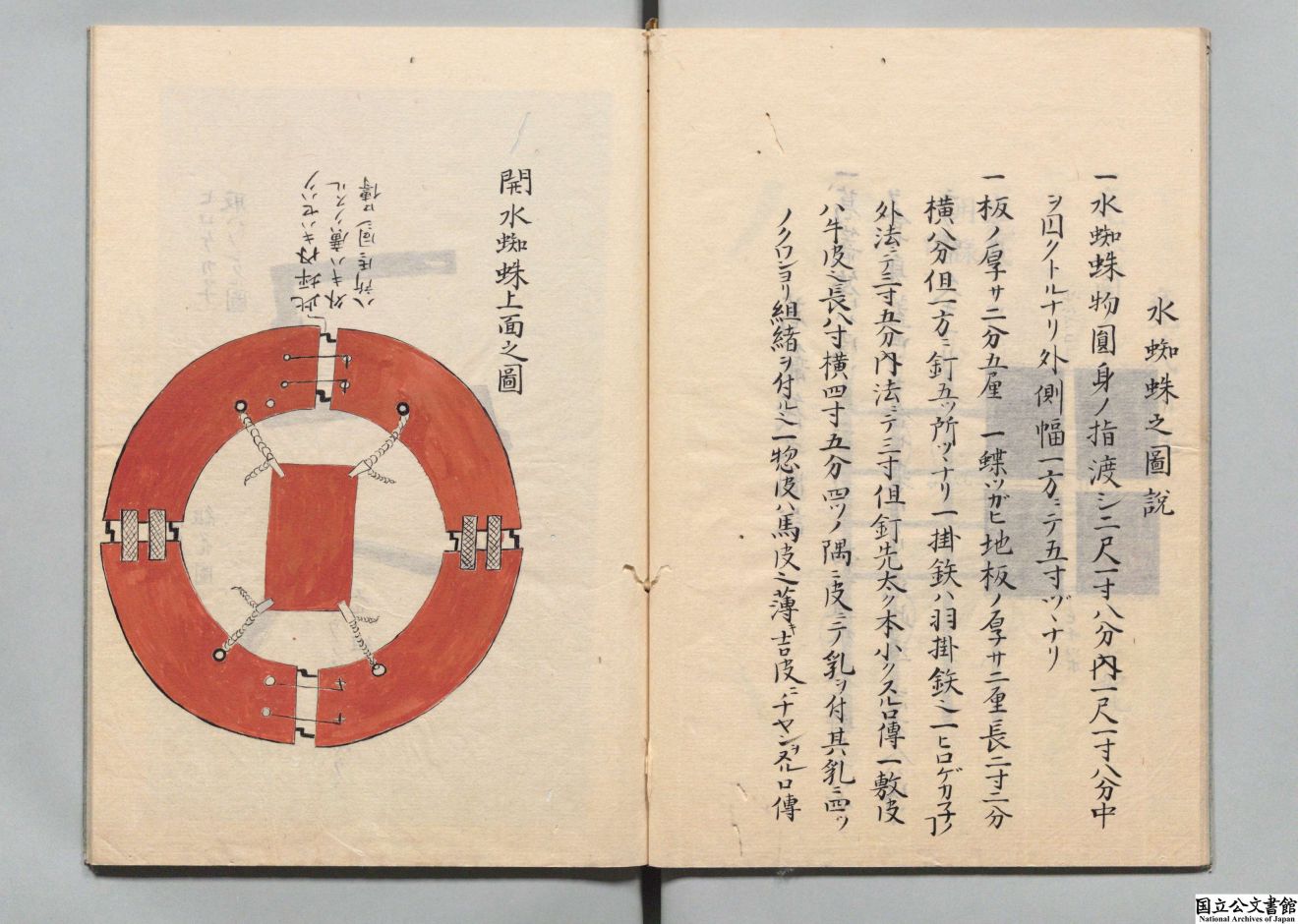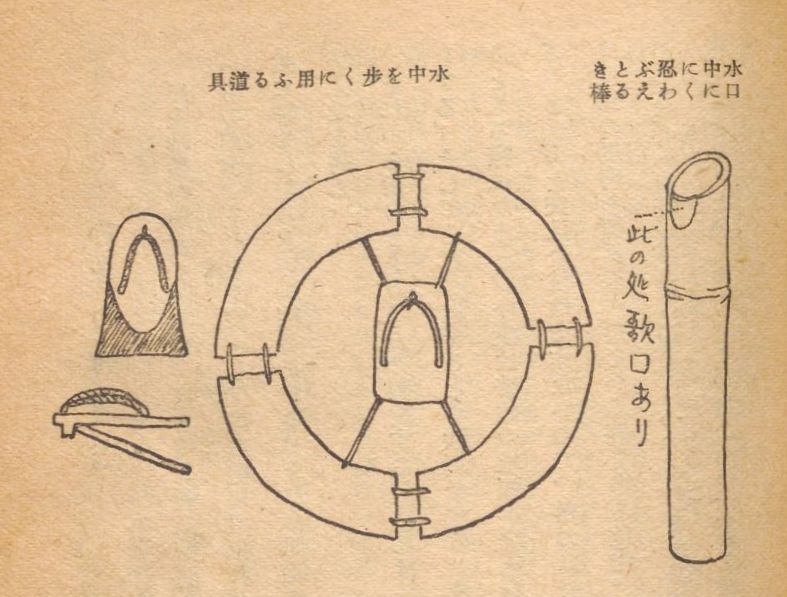- Kaleidoscope of Books
- NINJA: In Fiction and in Reality
- 1st Scroll: Ninja in the Entertainment World - Gorgeous Red Carpet
- Introduction
- 1st Scroll: Ninja in the Entertainment World - Gorgeous Red Carpet
- 2nd Scroll: Real Ninja - Tough and Impossible Missions!
- 3rd Scroll: Difference between the entertainment ninja and the real ninja!
- Secret Scroll: Let's read ninjutsu books!
- Epilogue / Riddle Solution Scroll
- References
1st Scroll: Ninja in the Entertainment World - Gorgeous Red Carpet
This is the first step to learn about ninja. Let's take a look at the portrayal of ninja in the entertainment world that you may be familiar with.
Ninja Literature of the Edo Period
The image of the ninja, with superhuman physical abilities and mysterious ninjutsu, has been formed through their depiction in creative works such as novels and stage plays.
There are also descriptions of ninja in military chronicles based on historical facts. However, during the Edo period, ninja novels became more creative and started focusing on individual ninja. KIMURA Hitachinosuke is considered the oldest fictional ninja. He appears in Juraku Monogatari, a kanazōshi from the Kan'ei era (1624-1644) based on the rebellion against TOYOTOMI Hideyoshi by Hidetsugu. Hitachinosuke instigated Hidetsugu to rebel against Hideyoshi. Furthermore, to prove that it was possible to assassinate Hideyoshi, he snuck into the keep of Osaka Castle, where Hideyoshi was residing. However, Hideyoshi happened to be absent that day, so he just stole the lid of a jug and left.
Hitachinosuke tells Hidetsugu that he only intended to steal Hideyoshi's possessions, but he was planning to assassinate Hideyoshi if he had the chance.
The storyline of "a ninja uses ninjutsu to steal something valuable and come back" shown in this work became the most typical scenario in later ninja novels. Following Juraku Monogatari, Otogiboko by ASAI Ryoi (?-1691), which was a collection of strange stories and widely read in the Edo period, also contains stories called "Shinobi no Jutsu" and "Tobi Kato". In the story of "Tobi Kato", a ninja named Tobi Kato performed illusions for people such as swallowing a cow. In order to demonstrate his ninja skills to UESUGI Kenshin, he stole a naginata from a heavily guarded residence and even kidnapped a servant child. Otogiboko had a great influence on other works. IHARA Saikaku (1642-1693) also depicted ninja who transform into rats and attempt to steal weapons in Shinkashouki.
In the story "Shinobi no Jutsu", a ninja steals the treasured Kokin Wakashu from the sleeping quarters of TAKEDA Shingen.
As explained above, ninja in Edo period ninja novels were often portrayed as suspicious characters who used supernatural techniques stemming from powers other than the gods. They were usually villains and were punished by righteous samurai.
The Appearance of Famous Ninja
From the Edo period to the present day, ninja have colored the world of stories in various ways.
Jiraiya
Jiraiya is a well-known fictional ninja. Jiraiya Gōketsu Monogatari was a best-seller at the end of the Edo period, in which the toad sorcerer Jiraiya plays an active role. In total, 43 volumes were produced from 1839 to 1868. Because the books were published as gōkan, novels with illustrations, which was a popular style at the time, the story gained popularity among a wide range of generations.
Jiraiya, who uses sorcery to control toads, and Tsunade, who uses sorcery to control slugs, fight against Orochimaru, who was born from a huge serpent. Toads are scared of snakes, snakes are scared of slugs, and slugs are scared of toads. This three-way structure made the story more interesting. These characters are also used in the famous manga Naruto (1999-2014). Even now, Jiraiya is an indispensable character in entertainment such as kabuki and movies.
The interesting thing is that Jiraiya uses not ninjutsu, but sorcery. Why has a man who uses deceptive and mysterious techniques come to be regarded as a ninja? First of all, the mysterious power of sorcery was considered appropriate as a basis for ninjutsu, the details of which are unclear. Another significant factor is that while using sorcery, Jiraiya also acts like a ninja, such as breaking into enemy territory. From the Edo period onward, in works other than Jiraiya, ninjutsu was often depicted as a kind of supernatural sorcery.
ISHIKAWA Goemon
Some real-life characters who are considered ninja have come to appear in many stories. ISHIKAWA Goemon, a notorious thief, is one such person. Historical sources only tell us that a thief named Ishikawa Goemon was boiled in a cauldron around 1594, and that his family and his gang were also executed.
Until the first half of the 18th century, the works mainly focused on his execution by being boiled alive in a cauldron with his own child. However, from the latter half of the 18th century, in works such as Zokkin Hiseidan and Ehon Taikōki, Goemon was depicted sneaking into Fushimi Castle seeking to kill Hideyoshi or steal the Chidori no Koro (plover incense burner). These stories have become the subject of kabuki and other forms of entertainment. In this way, Goemon's character was established as a ninja in the entertainment world.
HATTORI Hanzō
HATTORI Hanzō was a well-known Iga ninja. HATTORI Hanzō and ninja characters similar to HATTORI Hanzō have played a major role in everything including manga, anime, novels, movies, and more. In fact, "HATTORI Hanzō" is a name that was passed down from HATTORI Yasunaga, the first generation Hanzō who was active in the 16th century, to the end of the Edo period by successive heads of the family. It is believed that only the first generation, Yasunaga, was a real ninja. The second generation Hanzō, Masanari, served TOKUGAWA Ieyasu as a samurai, although he is believed to have been trained as a ninja.
The famous "Shinkun Iga-goe (literally, 'divine lord going over Iga')" was a major catalyst for HATTORI Hanzō's name becoming well known. When ODA Nobunaga was killed in the Honnōji Incident in 1582, TOKUGAWA Ieyasu was in Sakai and it was questionable whether he could return safely to Okazaki Castle. However, it is said that Masanari and Iga ninja took a route across Iga to evade the enemy lines, safely delivering Ieyasu to the castle. Masanari was recognized due to his success on the battlefield and was given land at the Kojimachiguchi Gate of Edo Castle. This gate took its new name from Hattori Hanzō and now is called Hanzōmon. As Hattori Hanzō and others served TOKUGAWA Ieyasu, this led to Iga ninja moving to the Mikawa and Kanto regions.
Descendants of HATTORI Hanzō served MATSUDAIRA Sadanobu, who is famous for the Kansei reforms, as his chief retainers. This drawing depicts HATTORI Hanzō's residence in Shirakawa in 1785.
It was in the 1950s that HATTORI Hanzō came to be depicted as a ninja in the world of fiction. In Owl's Castle, a 1958 work by SHIBA Ryōtaro (1923-1996), HATTORI Hanzō is described as a ninja.
Emergence of SARUTOBI Sasuke: Tatsukawa Bunko Series and Taisho Era Ninjutsu Boom
In the modern era, ninja as a profession came to an end. In contrast, however, ninja in the entertainment world became even more active. The driving force behind this trend was SARUTOBI Sasuke.
SARUTOBI Sasuke is the central figure of the SANADA Ten Braves. It is no exaggeration to say that he is one of the most famous ninja, whose name is known across generations. Even if you do not know about SARUTOBI Sasuke, you have probably heard his name at least once, as the name "Sasuke" is often used for ninja-related characters and content.
What made SARUTOBI Sasuke so popular was the Tatsukawa Bunko series published by Tatsukawa Bunmeido in Osaka during the late Meiji and Taisho periods.
Sasuke skillfully uses ninjutsu to battle great warriors. His adventure stories were so popular that a ninjutsu boom happened.
In Tatsukawa Bunko's 40th novel, SARUTOBI Sasuke (1913), he is portrayed as the protagonist. Sasuke, the son of a country samurai in Shinshu, trained under the ninja master TOZAWA Hakuunsai and later became a vassal of SANADA Yukimura. He uses ninjutsu and fights against great warriors and bandits from all over the region with Sanada's other vassals, such as MIYOSHI Seikai Nyudo. Sasuke also defeats and converts YURI Kamanosuke, a spear master, and KIRIGAKURE Saizo, a ninjutsu master. They become Sasuke's companions.
As can be seen from this synopsis, the emergence of SARUTOBI Sasuke marked a major change in the way ninja were portrayed. This is because Sasuke was portrayed as being on the side of justice, whereas in the past ninja were often portrayed as thieves or other evil characters. In Sarutobi Sasuke, Sasuke tests his ninjutsu against that of the villainous ISHIKAWA Goemon. This scene contrasts the old and new ninja.
In addition to SARUTOBI Sasuke, Tatsukawa Bunko's 55th volume was KIRIGAKURE Saizo: Sanada Family Ninjutsu Meijin and the 125th volume was Namba Kassen Sarutobi Sasuke Daikatsudou: Ninjutsu Meijin, which both gained popularity. Tatsukawa Bunko was also very popular among children, as all kanji characters were marked with kana, and old books could be exchanged for another book just by adding 3 sen.
OKUSE Heishichiro (1911-1977) was a leading ninja researcher of the Showa period and promoted ninja tourism as mayor of Ueno City (now Iga City) in Mie Prefecture. He was also one of those who were fascinated by Tatsukawa Bunko as a child, recalling that "this kodan storytelling-like creation was so exciting that as a young boy it was an unusual stimulus for me and made a very strong impression."
The ninjutsu boom of the Taisho period, sparked by Tatsukawa Bunko, later spread to manga and movies. It was around this time that YAMADA Minoru's Ninjutsu Manga (1920) and the movie Jiraiya the Hero (1921), starring ONOE Matsunosuke, were released."
Research on Ninjutsu in the Taisho and Showa Periods
From the end of the Meiji period into the Taisho period, psychic and paranormal phenomena such as clairvoyance (see Kaleidoscope of Books No. 13, "The Senrigan Affair and Its Time Period") and hypnotism attracted great interest. The movement to scientifically explain these phenomena also spread, and eventually extended to ninjutsu as well.
One of the earliest to engage in ninjutsu research was the novelist and critic ITO Gingetsu (1871-1944). Using historical documents such as Shoninki (described later), ITO wrote Ninjutsu no Gokui (The Secret of Ninjutsu) and other related books to correct the public's misconception that ninjutsu was like magic or hypnotism. Ito was also the first to introduce ninja and ninjutsu to the world. Ito's article "The Ninjutsu," published in Japan Magazine (1918), is currently considered to be the earliest information about ninjutsu to be disseminated overseas.
Explanation of how a ninja uses a sword to climb over a wall in Ninjutsu no Gokui (The Secret of Ninjutsu).
A photograph of ITO on the cover of Ninjutsu to Kankinjutsu (Ninjutsu and alchemy). It is accompanied by the catchphrase, "The only ninjutsu researcher of our time."
While ITO was a pioneer in the study of ninjutsu in the Taisho period, FUJITA Seiko (1899-1966) was a ninjutsu researcher and practitioner in the Showa period. FUJITA had a unique career. He called himself the 14th head of the Koka school of ninjutsu and taught at the Nakano Spy School before the Pacific War. He was also known for being eccentric; for example, he stuck tatami needles into his own body to practice enduring hardship. On the other hand, he was also progressive, as he was one of the first to study Bansenshūkai, which is considered to be of high academic value along with Shōninki.
Based on today's research standards, their research had various problems. For example, in FUJITA's book, sandal straps are depicted in an illustration of the "mizugumo" (literally, water spider), a ninja tool used to cross water. However, there are no sandal straps shown in the mizugumo from Bansenshūkai. This addition has contributed to the misperception that mizugumo are used by standing on them. However, this method does not provide sufficient buoyancy, so the mizugumo would sink (now it is considered that mizugumo may have been used by sitting on them, and required flippers on both feet).
Nevertheless, thanks to these Taisho and Showa period ninja researchers, we are now able to conduct research using important ninjutsu books such as Shōninki and Bansenshūkai. They were undoubtedly the people who made the greatest contribution to the advancement of ninja research. Furthermore, in the postwar period, in addition to FUJITA, various other ninjutsu researchers, such as OKUSE Heishichiro, became active, and the veil that covered the real ninja was gradually lifted.
Mizugumo in Bansenshūkai and mizugumo in From Ninjutsu to Spy Warfare. Sandal straps were added in FUJITA's book.

Next
2nd Scroll
Real Ninja



